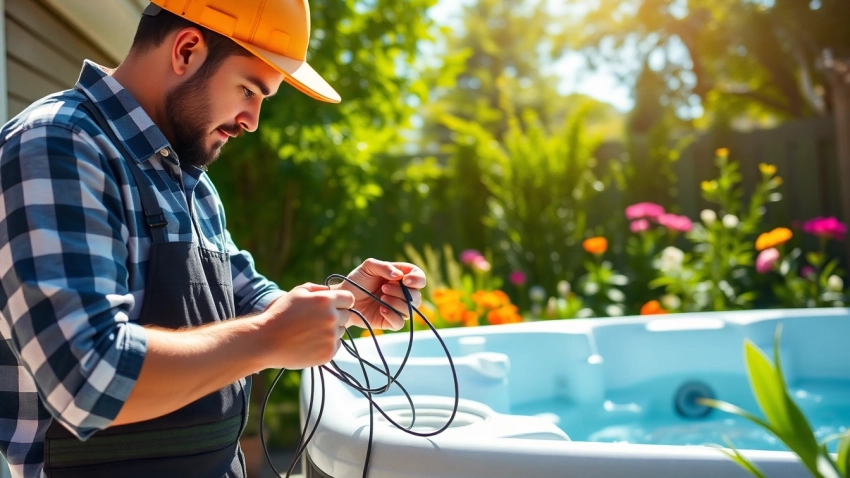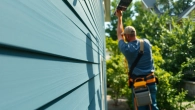
Essential Guide to Hot Tub Electrical Wiring for Safe Installation
Understanding Hot Tub Electrical Wiring Basics
What You Need to Know About Electrical Components
Hot tub electrical wiring is essential for both safety and functionality. Understanding the key components involved is vital for anyone looking to install or maintain a hot tub. The primary components include the main electrical panel, circuit breakers, ground fault circuit interrupters (GFCIs), and the hot tub’s control system. The main electrical panel distributes power throughout your home, while circuit breakers protect your home by stopping the flow of electricity when an overload is detected. GFCIs are particularly important as they prevent electrical shock by cutting off power when they detect a ground fault.
Key Safety Precautions for Hot Tub Wiring
Safety is paramount when dealing with hot tub electrical wiring. All work should be performed in compliance with local electrical codes and regulations. Always turn off power at the main panel before starting any electrical work. Using outdoor-rated wiring and components is crucial, as they are designed to withstand the elements. Protective measures such as circuit breakers and GFCI outlets should be installed to prevent electrical shock, ensuring that your hot tub experience is both enjoyable and safe.
Common Terminology in Hot Tub Electrical Wiring
Familiarizing yourself with common terminology is beneficial for understanding hot tub electrical wiring. Some essential terms include:
- Voltage: The electrical potential difference, measured in volts.
- Amperage: The flow of electric charge, measured in amps.
- Circuit: A pathway for electric current to flow.
- Grounding: A safety measure that directs electricity into the ground in case of a fault.
- Conduit: A protective tube through which electrical wires are run.
Planning Your Hot Tub Electrical Wiring Setup
Assessing Your Electrical Needs
The first step in planning your hot tub electrical wiring setup is to assess your electrical needs. This involves determining the hot tub’s voltage and amperage requirements, which should be listed in the owner’s manual. Additionally, you must evaluate the distance from your electrical panel to the hot tub location, as this will affect wire gauge and installation methods. Having accurate information will ensure you are adequately equipped for a safe and efficient wiring process.
Calculating the Electrical Load for Your Hot Tub
Calculating the electrical load is essential to ensure that your home’s electrical system can handle the additional demand. Most hot tubs operate on either 120V or 240V, and their amperage requirements can vary widely. To calculate the load, you can use the following formula: Load (watts) = Voltage (volts) x Amperage (amps). It’s important to factor in any additional electrical devices that may be used simultaneously, ensuring that you do not exceed the capacity of your circuit.
Choosing the Correct Wiring Methodology
Choosing the correct wiring methodology is integral to a successful installation. Standard practices involve either running a direct burial cable or utilizing conduit. Direct burial cable is designed for underground use and can be used without additional conduit in many cases. However, if local codes require, using conduit provides additional protection for the wiring. Ensure that the wiring is rated for outdoor use and meets local and national electrical code requirements.
Step-by-Step Guide to Hot Tub Electrical Wiring Installation
Preparing Your Site for Installation
Before installation, prepare your site meticulously. Identify the precise location of your hot tub and plan the path for the electrical wiring. Clear away any debris and ensure that the ground is level. If you are digging trenches for underground wiring, be aware of local utility lines. A utility locate service can help you avoid any potential hazards, ensuring safety during installation.
Essential Tools for Wiring Your Hot Tub
Having the right tools on hand is crucial for a successful hot tub electrical wiring project. Essential tools include:
- Wire cutters and strippers
- Cable pullers
- Voltage tester
- Drill and bits
- Conduit bender
- Screwdrivers and wrenches
- Tape measure
Gathering these tools beforehand will facilitate a smoother installation process.
Conducting the Installation: Best Practices
When conducting the installation, follow these best practices to ensure safety and efficiency:
- Turn Off Power: Always turn off the main power before beginning any electrical work.
- Follow Wire Specifications: Use the correct gauge wire to handle the calculated load and follow local codes.
- Secure Connections: Make sure all connections are tight and secure to prevent issues down the line.
- Test as You Go: Use a voltage tester to check connections and ensure everything is functioning correctly as you install.
- Document Your Work: Keep a log of the installation process and any significant changes to wiring for future reference.
Troubleshooting Common Hot Tub Electrical Wiring Issues
Identifying Wiring Problems
Despite careful installation, problems can arise. Identifying wiring issues early can save time and money. Common symptoms include:
- Hot tub not powering on
- Tripped circuit breakers
- Unexpectedly high energy bills
These issues may indicate faulty wiring, overloaded circuits, or equipment failures. Use a multimeter to check for continuity and ensure that circuits are functioning correctly.
Preventing Electrical Short Circuits
Electrical short circuits can be dangerous and should be addressed immediately. Preventative measures include:
- Using the correct gauge wire to handle current loads.
- Installing GFCIs in your circuit to prevent shock and fire hazards.
- Regularly inspecting wiring for signs of wear or damage.
Regular checks and maintenance can significantly reduce the risk of short circuits.
When to Call a Professional Electrician
While many homeowners can handle basic installations and troubleshooting, knowing when to call in a professional is essential. If any of the following situations arise, it’s best to seek expert assistance:
- Complex rewiring beyond your expertise
- Electrical code violations that need rectification
- Ongoing issues that are difficult to resolve
Do not hesitate to reach out to a professional electrician to ensure safety and compliance with regulations.
Maintaining Your Hot Tub Electrical Wiring System
Routine Inspections and Maintenance Tips
Regular maintenance is vital for keeping your hot tub electrical wiring in optimal condition. Recommended practices include:
- Conducting visual inspections for signs of wear, frays, or discoloration.
- Checking connections for corrosion or looseness.
- Testing GFCIs monthly to ensure they are working properly.
By setting a schedule for inspections, you can catch potentially serious issues before they become major problems.
Understanding Local Wiring Codes and Regulations
Every region has specific electrical codes and regulations that govern hot tub installations. Familiarize yourself with the hot tub electrical wiring standards in your area to ensure compliance. This can include permits, inspections, and specific installation methods. Staying informed reduces the risk of legal complications and ensures safety.
Upgrading Components for Better Performance
As technology advances, upgrading components can enhance the performance of your hot tub electrical wiring system. Consider the following options:
- Installing smart home technology for remote control and monitoring.
- Switching to more energy-efficient components to reduce electricity usage.
- Updating circuit breakers and GFCIs to comply with the latest safety standards.
These updates not only improve performance but can also enhance safety and user experience.












Leave a Reply